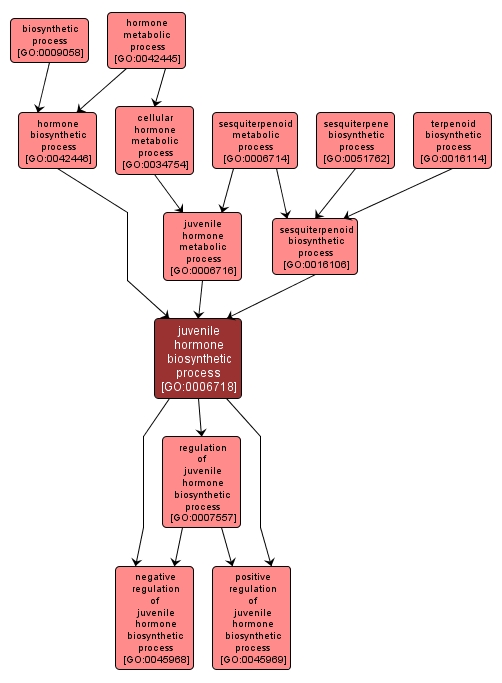GO TERM SUMMARY
|
| Name: |
juvenile hormone biosynthetic process |
| Acc: |
GO:0006718 |
| Aspect: |
Biological Process |
| Desc: |
The chemical reactions and pathways resulting in the formation of juvenile hormones, the three sesquiterpenoid derivatives that function to maintain the larval state of insects at molting and that may be required for other processes, e.g. oogenesis. |
Synonyms:
- juvenile hormone biosynthesis
- juvenile hormone anabolism
- juvenile hormone formation
- juvenile hormone synthesis
|
|

|
INTERACTIVE GO GRAPH
|














